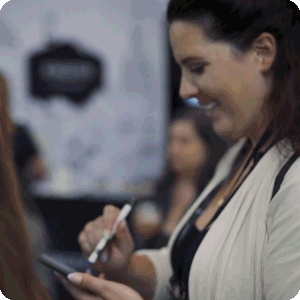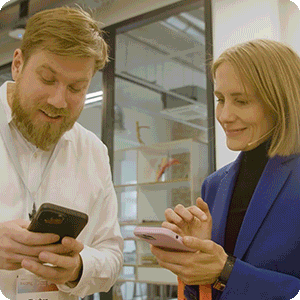Crafting Compelling Emails to Engage Your Audience Pre-Event
Whether you’re running a members-only workshop or hosting a conference, events are a core part of your outreach strategy. But they only succeed if you get your target audience through the door, making effective event marketing—particularly email—crucial to your success.
From your event announcement to event day, your organization can use this powerful tool to build anticipation and secure the registrations you need for success. In this guide, we’ll review how to harness email marketing leading up to your event.
1. Plan a Strategic Email Schedule
You likely already have a content calendar determining when you’ll post on social media and otherwise communicate with your audience leading up to your event. Look closer at your pre-event schedule and align it with the supporter journey at this stage—which involves deciding to attend your event.
It’s helpful to map the supporter journey on a funnel. Fifty & Fifty’s guide to digital marketing recommends using this structure:
- Awareness is when the audience member finds your organization or, in this case, learns about your event. An email at this stage would be a “Save the Date” message a few months out.
- Consideration is when the audience learns more information about the event, which makes them think about signing up. Emails in this stage would explain appealing aspects of the event a few months before, such as guest speakers and entertainment.
- Conversion is when the audience decides to sign up for the event. Emails in this stage would be in the weeks before the event, incentivizing attendees to register and highlighting why the cause is so important.
Each organization’s funnel looks different depending on your campaign and audience preferences, but generally, you should ramp up your persuasion tactics in your email cadences according to this framework. Create your own funnel by analyzing what strategies have worked in the past, separating them by funnel stage, and placing them on a timeline.
2. Write Irresistible Subject Lines
On average, your audience only reads your emails for nine seconds—meaning you don’t have much time to make a great first impression before readers lose interest. Perfecting your subject lines helps surmount that barrier and keep your audience’s attention. High-quality subject lines for pre-event marketing emails are:
- Personalized. Recent studies show personalized subject lines are more than twice as likely to be opened. Use your marketing platforms to automatically add the reader’s first name to email templates and the subject line.
- Action-oriented. Use eye-catching headlines that inspire your audience to take action, whether signing up for your event or simply reading about your last event’s impact.
- Teaser-focused. Don’t give away all important information in your subject line! Use teaser language, such as “We’ve Got Big News About Our Event!” or “Just Announced: See the New Speakers for Our Event!” so readers click through to the main message.
Like your calls to action, your subject lines should be as direct as possible. Try to keep them under 40 characters so your audience immediately understands what the email is about.
3. Add Interactive Elements
Simply including blocks of text in your email isn’t enough to engage your audience past the nine-second mark. Instead, take your messages to the next level with interactive email elements that inform, entertain, and persuade your audience to sign up. For instance, you might include elements such as:
- Embedded videos of last year’s event
- Clickable FAQ sections
- Links to your website or donation page
- Real-time countdown timers
- Polls or surveys
- Social media sharing buttons
- Place to download your event app
Interactive elements should make your emails more interesting and useful for your audience. That said, don’t clutter your emails with unnecessary elements that could distract the reader from your main value proposition.

See how EventMobi’s Event App can help you engage your audience at (and in-between!) events.
4. Prioritize Accessibility and Mobile Users
As a digital marketer, your job is to ensure as many people can access, interpret, and draw meaning from your emails as possible. That’s why prioritizing accessibility for people of all abilities is essential. Here are some accessibility best practices to keep in mind for your pre-event emails:
- Include alt text that explains the purpose of meaningful images. You can leave the alt text blank if it’s just a decorative or stock image.
- Ensure colors contrast well. Colors that blend together can make reading challenging for people with vision impairments. Use a color contrast tool to check if your approach aligns with best practices.
- Properly size text so it’s easy for the audience to read. Also, use legible fonts, such as Arial, Verdana, or Times New Roman.
- Write easily understandable content free of jargon and complicated language. This helps audiences draw value from your emails regardless of their current knowledge of your event or organization. Additionally, consider translating your emails if you have a multilingual support base.
This concept doesn’t end with content accessibility. Your emails should also be accessible on any device, including cell phones and tablets. Ensure your images and content automatically resize to fit the device’s screen dimensions. Some email management systems and event management solutions allow you to preview what your email will look like on phones, tablets, and computers, so double-check that your content is legible and make any necessary adjustments before sending your emails.
5. Test Your Emails
Some emails hit the mark more than others. Your strategy will develop over time, and eventually, you’ll find an approach that best supports your pre-event marketing needs.
To get there, you’ll need to test different tactics to determine which are most effective. A/B testing empowers you to gauge what your audience responds well to so you can always nail your emails. A/B testing works like this:
- Draft two (or more) emails using different tactics in the subject line, body, and calls to action.
- Send the emails to different audience members.
- Track relevant key performance indicators (KPIs), such as open rate and click-through rate.
- Compare the KPIs of different email campaigns to decide which resonated more with your audience.
If you want to check how effective certain strategies are for certain groups based on their characteristics or motivations, segment recipient groups strategically in step two. For instance, you might test whether younger audiences respond well to emojis in your subject line.
As you craft your email strategy, plan for the next iteration of your event in advance. Keep detailed records in your database so you can build upon this event’s success in the future.

Book your demo of EventMobi today to learn how a single, powerful platform can help you keep your attendees engaged and excited.